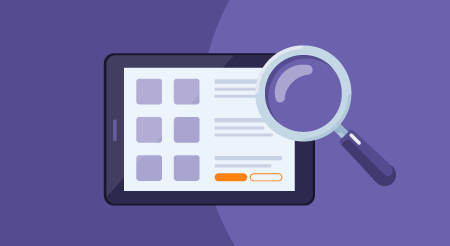Operating a retail store calls for a range of administrative, management and marketing skills. From ensuring that there’s enough inventory to putting together monthly sales reports, these skills are necessary for your store to run smoothly.
Having an efficient point of sale (POS) system can go a long way in making sure that all your operations are working in unison, and retailers that spend the time and resources to implement such a system before they need it will reap the benefits. In this article, we speak to two industry experts who’ll share tips on what you must have in a POS and how to choose the best option for your retail store or restaurant.

Marylise Tauzia
Product marketing and evangelism lead at Square

Yamarie Grullon
Director of content strategy and social media at ShopKeep
What’s the Point of a Point of Sale (POS) System?
A point of sale system, or POS, is the place where your customer makes a payment for products or services at your store. Simply put, every time a customer makes a purchase, they’re completing a point of sale transaction.
The latest point of sale software goes beyond credit card processing to help retailers and restaurants incorporate mobile POS features and contactless payment options, ecommerce integration capabilities, and more.
At Software Advice, our advisors help small business software buyers find the right retail POS software everyday. We asked senior advisor Julia Morton, who helps POS software buyers, about the importance of a good point of sale system, and here’s what she had to say:

“Finding the right POS system for your business can eliminate a lot of manual entry and reporting errors down the road. Many of these systems are similar in nature, but there are key features that stand out in different systems that can make all the difference. For example, finding a system geared to help apparel stores with heavy inventory needs, grocery stores that need scale integration, or service-oriented restaurants or cafés that need menu optimization.”
Julia Morton
Software Advice Senior Advisor for Point of Sale software buyers
The POS serves as the central component for your business; it’s the hub where everything—like sales, inventory management, payment processing, and customer management—merges.
In fact—according to a survey we ran among retailers last fall (methodology below)—almost a quarter of the business leaders we surveyed (23%) were prioritizing their point of sale infrastructure (upgrading an existing system or investing in a new POS system) more during COVID-19 while an additional 43% were maintaining their pre-pandemic level of prioritization. In other words, even during a global pandemic, 2/3 of retail leaders weren’t willing or able to deprioritize their POS technology.
As evident as the benefits of a POS system are—with some businesses increasing sales by as much as 200% via the reporting feature alone—there are still businesses out there that use some combination of manual methods, cash registers, accounting software, and spreadsheets for processing transactions and recording sales.
So, why have some retailers not taken that step to POS yet? To begin with, implementing new technology—especially technology that’s central to your business process—can be overwhelming. But retailers need to consider the negative consequences of failing to have a POS in place.
“[Retailers] run the risk of slowing down their operations and missing critical data that could help them grow their business faster. Having key insight about their customers, their inventory level and when they should order more supplies are examples of information a POS provides.”
Marylise Tauzia
Product Marketing and Evangelism Lead, Square
Understanding what a POS system is—its software and hardware components, as well as capabilities—will enable you to make an educated buying decision.
Software components of a POS system
Every point of sale POS system comprises of software and hardware components that make running the daily operations of your business easier and faster. It’s important to understand what POS software options there are and what each have to offer.
Here are some differences between an on-premise (or installed) POS terminal and a cloud based POS system (or hosted POS solution):

On the other hand, a restaurant with multiple locations and numerous point of sale terminals would likely benefit more from a cloud based POS system with centralized payment processing, inventory management, customer loyalty program, and more. The restaurant will still need POS hardware, (such as terminals, cash drawers, and tablets), but the systems will all communicate with each other.
When deciding what to look for in a POS software, Marylise Tauzia, product marketing and evangelism lead at Square, says ease of integration is imperative.
“Flexibility is key. Ensure your POS vendor works with the payment processor/gateway of your choice, so that you can control cost. If you’re already using applications important to your business, make sure the POS can integrate with them seamlessly, so that you can continue using them.”
For example, a restaurant might be using an online ordering and delivery application that can integrate with their new restaurant POS system to allow customers to pay directly through the app.
Hardware components of a POS system
These are the common physical components required to get your POS up and running.
Monitor/tablet: Displays the product database and enables other functions, such as employee clock-in and viewing sales reports. Tablets—especially iPads—are popular for replacing bulkier monitors.
Barcode scanner: Automates the checkout process. Scanning barcodes pulls product info and adds it to the checkout total. Barcode scanners can also integrate with inventory management systems to automatically adjust stock levels.
Credit card reader: Since the EMV payment standard went live in 2015, secure and EMV-compliant credit card readers are a must-have. Non-compliant retailers face potentially huge losses on account of fraud liability.
Receipt printer: Email and text receipts may be gaining popularity, but paper receipts remain essential for providing customers with a quick snapshot of their purchase or returns.
 Cash drawer: It may fade away in years to come, but cash is still king. Until then, you’ll need a secure place to store cash for transactions. Another benefit of cash: there are no associated credit card fees.
Cash drawer: It may fade away in years to come, but cash is still king. Until then, you’ll need a secure place to store cash for transactions. Another benefit of cash: there are no associated credit card fees.
Key features of a POS system: What to look for when buying
Many tasks in a retail store can be overly tedious and resource exhaustive. With the right POS system, retailers have the ability to simplify crucial daily business operations with greater proficiency.
“Modern POS systems do more than just offer flexibility when processing daily transactions,” says Grullon. “They improve a merchant’s chances of success by providing them with tools to streamline business processes.”
Here are several key features that retailers and restaurants should look for in selecting a POS system:

Your POS system should ideally be able to:
- Generate detailed sales reports (based on product, hour, employee, total cost of items sold, total retail amount, net profit, profit percentage, gross margin)
- Provide quick snapshots and charts on your store’s sales performance
Inventory Management: One of the most important functions of a POS system, inventory management, at its very essence, keeps track of all products so you know when it’s time to order/or not order specific products.
Your POS system should enable you to:
- Scan and count products digitally
- Manage your stock by creating product variations (size, color)
- Identify pieces of inventory with a unique serial number
- Track inventory levels across multiple locations
- Enable seamless ordering such as automatically setting custom reorders of best-sellers
- Consolidate purchases and orders in one order
Customer Management: Building strong relationships with your customers will lead to repeat business. A POS should have customer relationship management (CRM) to track all customer data.
Your POS system should give you the ability to:
- Attach a sale/transaction to a customer
- Keep track of your customers’ purchase history
- Capture customer information such as name, age, birthday, phone number and email address
- Use email marketing to keep in touch with customers
- Create a built-in loyalty program (more advanced systems will have this)
Employee Reporting and Management: The performance of your employees can make or break the success of your store. Having the ability to set sales targets as well as know who your top performers are and who requires extra coaching will help increase sales.
Your POS system should give you the ability to:
- Add employees to your system
- Create and modify schedules for employees based on forecasted activity
- Email schedules to employees
- Track employees’ weekly and over-time hours
- Analyze who your top performers are
Choosing the best retail POS system: Questions to ask
If you’re choosing a POS system for the first time, start making a list of features you must have and talk to fellow business owners who are operating in a similar space. Ask what POS systems they’re using and what they like, or don’t like, about them.
“Then start looking at solutions and make sure vendors cover the key points important to your business while also offering a secure, easy-to-use, easy to maintain and modern solution,” says Tauzia.
Usability and agility is vital in a POS. “It’s important to consider ease of use, flexibility in pricing, what actionable insights the system provides, data security, hardware durability and quality of customer service,” says Grullon.
Once you start talking to vendors, be sure to ask questions that demand definitive answers.
Some questions to ask:
Is the POS able to integrate with my existing software?
Do you have a website or accounting software? Choosing a POS provider that integrates with your existing setup will save you time and money.
What payment methods can the POS hardware accept?
Double check that the POS solution is able to accept chip-enabled credit and debit cards. You’ll also need to have an EMV-compliant POS terminal.
How much does the software really cost?
POS systems can cost as little as a few hundred dollars each month all the way up to tens of thousands for a made-to-order solution. Download our 2021 retail POS pricing guide for a full breakdown, including pricing models and ranges, unexpected costs to look out for, and pricing for popular systems.
Is your only option to sign a contract?
Signing on a dotted line means you’ll have to commit to the service until your contract ends, even if you don’t like it.
Are there any hidden fees?
Find out if there are any hidden fees involved in payment processing. These can come in the form of activation, downloads, early termination, refunds and transaction fees for different debit/credit cards.
Is any hardware proprietary?
Choosing a POS software vendor that offers proprietary hardware can save you time while offering smoother functionality. However if you’re looking to customize your setup, a proprietary solution can be restrictive as it’ll only be compatible with equipment from the same company.
We’re ready to help you in your POS software search
Whether you’re a small retailer or you run a chain of restaurants, we hope that the information in this article has prepared you to make your POS system as efficient and up-to-date as possible. But don’t worry, we’re not leaving you to fend for yourself. Here is a list of follow-up resources to assist you during your search:
1. Research the most popular retail POS systems. We’ve compiled a list of the top retail POS solutions in our FrontRunners for Retail Management. These are the POS systems that are most recommended by fellow business owners for their usability (full methodology here).
2. Complete a retail software questionnaire. For first-time buyers, the POS market can be hard to navigate. This quick questionnaire will help you narrow down your options with what your business needs.
3. Read reviews from fellow businesses owners. Once you’ve come up with a shortlist of potential POS systems, check out what businesses like yours are saying about them by reading authentic user reviews in our directory. Finding out whether real people are satisfied should enable you to make an informed buying decision.
4. Get free, personalized help from one of our advisors. We understand that with all the POS options out there, trying to select one can be overwhelming. But our software advisors, like Julia, have plenty of experience helping buyers just like you and can provide you with a short list of solutions that meet your needs and fit your budget in just about 15 minutes, all for free. Schedule a call or click here to chat now.
Software Advice COVID-19 Retail Impact Survey 2020
The Software Advice COVID-19 Retail Impact Survey was conducted in September 2020. We surveyed 429 retail “leaders,” defined as retail VPs, retail directors, retail managers, or any other role with retail leadership responsibilities, or any other role with retail leadership responsibilities at U.S.-based businesses. We worded the questions to ensure that each respondent fully understood the meaning and the topic at hand.
Need Any Technology Assistance? Call Pursho @ 0731-6725516




